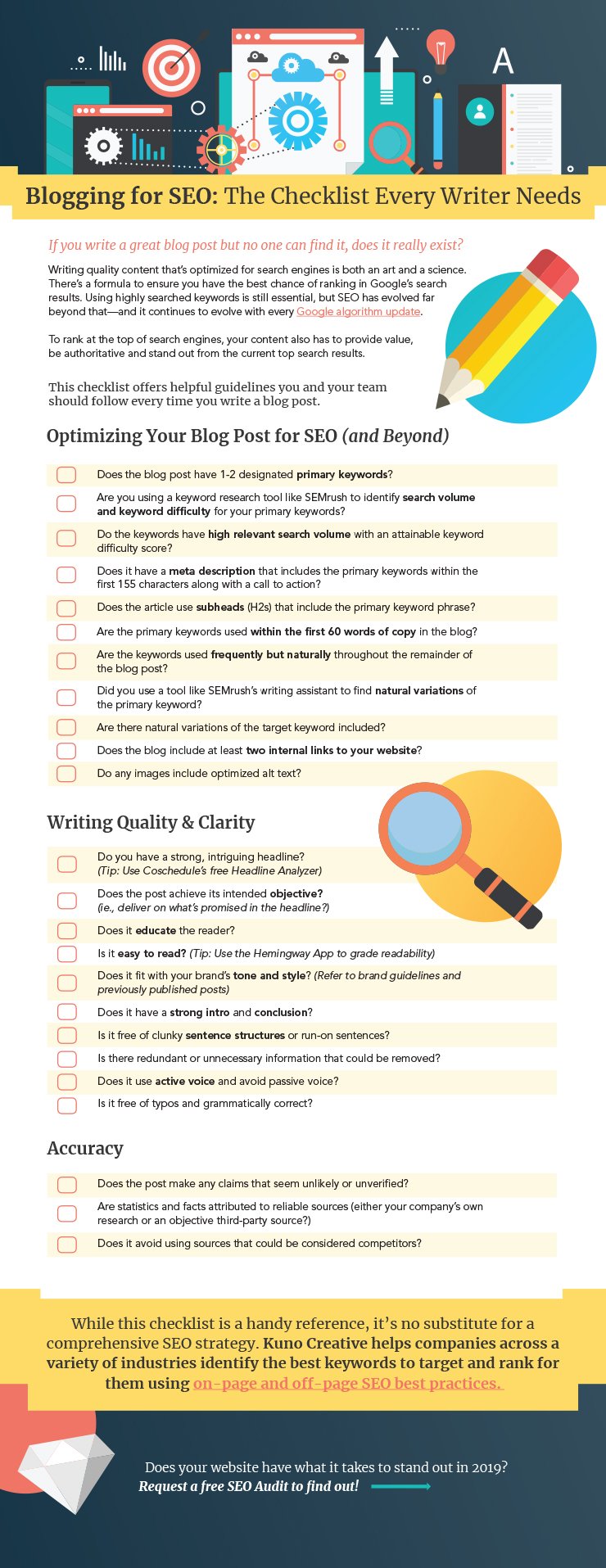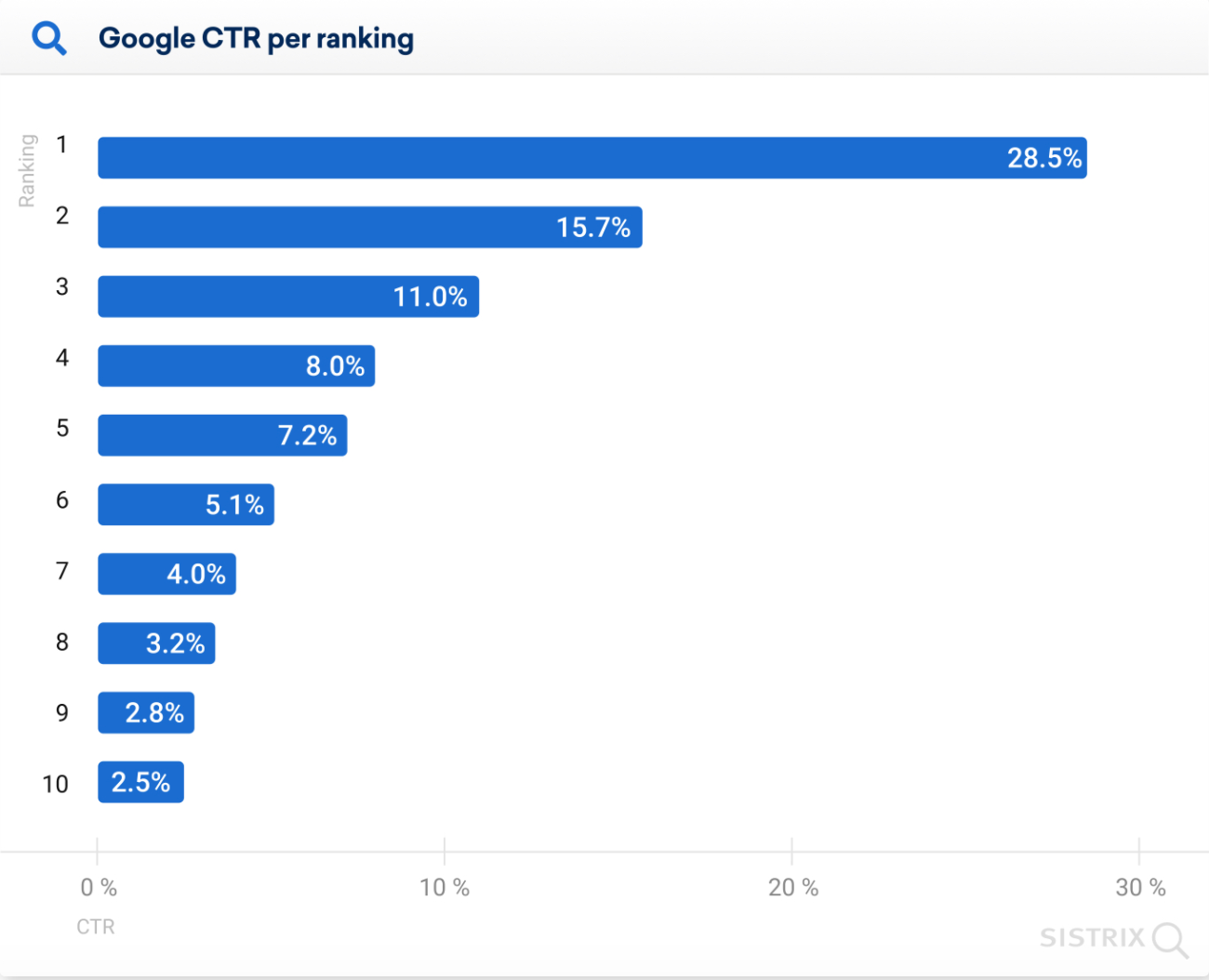

If you write a great blog post but no one can find it, does it really exist?
Blogging for SEO is both an art and a science. There’s a formula to ensure you have the best chance of ranking in Google’s search results.
Using highly searched keywords is still essential, but SEO has evolved far beyond that—and it continues to evolve with every Google algorithm update.
To rank at the top of search engines, your content also has to provide value, be authoritative and stand out from the current top search results.
This checklist offers helpful guidelines you and your team should follow every time you write a blog post.
Download a printable version of the checklist.

Blogging For SEO (And Beyond)
Download a printable version of the checklist.
While this checklist is a handy reference, it’s no substitute for a comprehensive SEO strategy. Kuno Creative helps companies across a variety of industries identify the best keywords to target and rank for them using on-page and off-page SEO best practices.
We can help you identify what keywords your existing blogs and webpages are ranking for already and optimize them for search engines. This may include adding more content, adding subheads in the form of questions, using primary keywords more frequently, or finding new variations of those keywords.
Improving your rankings for these "striking distance" keywords can make a big difference in your organic traffic. Let's say one of your top service pages ranks No. 15 for the phrase "employee engagement surveys." This is a core part of what your company offers, so you want people to find you first when they're searching for this. Improving your ranking from 15 to 5 will move you from the second page to the first page of Google's search engine results, where you'll capture roughly 7% of the people searching for that term compared to next to nothing if you're on the second page, according to Search Engine Journal. If you make it to the first search result, the payoff is even higher — you'll capture potentially 25% of all searches!
 (Source: Search Engine Journal)
(Source: Search Engine Journal)
We also review your competitor's SEO rankings to find new opportunities to rank for keywords you may not have considered.
We use all this data to help you develop a content marketing strategy to help you improve SEO and achieve your overall goals. While keywords are critical building blocks of your content strategy, it's important to remember you're not only blogging for SEO — you're blogging to answer your buyers' most pressing questions and help them take the next step in their journey.
Does your website have what it takes to stand out in the coming year? Request a free SEO Audit to find out!